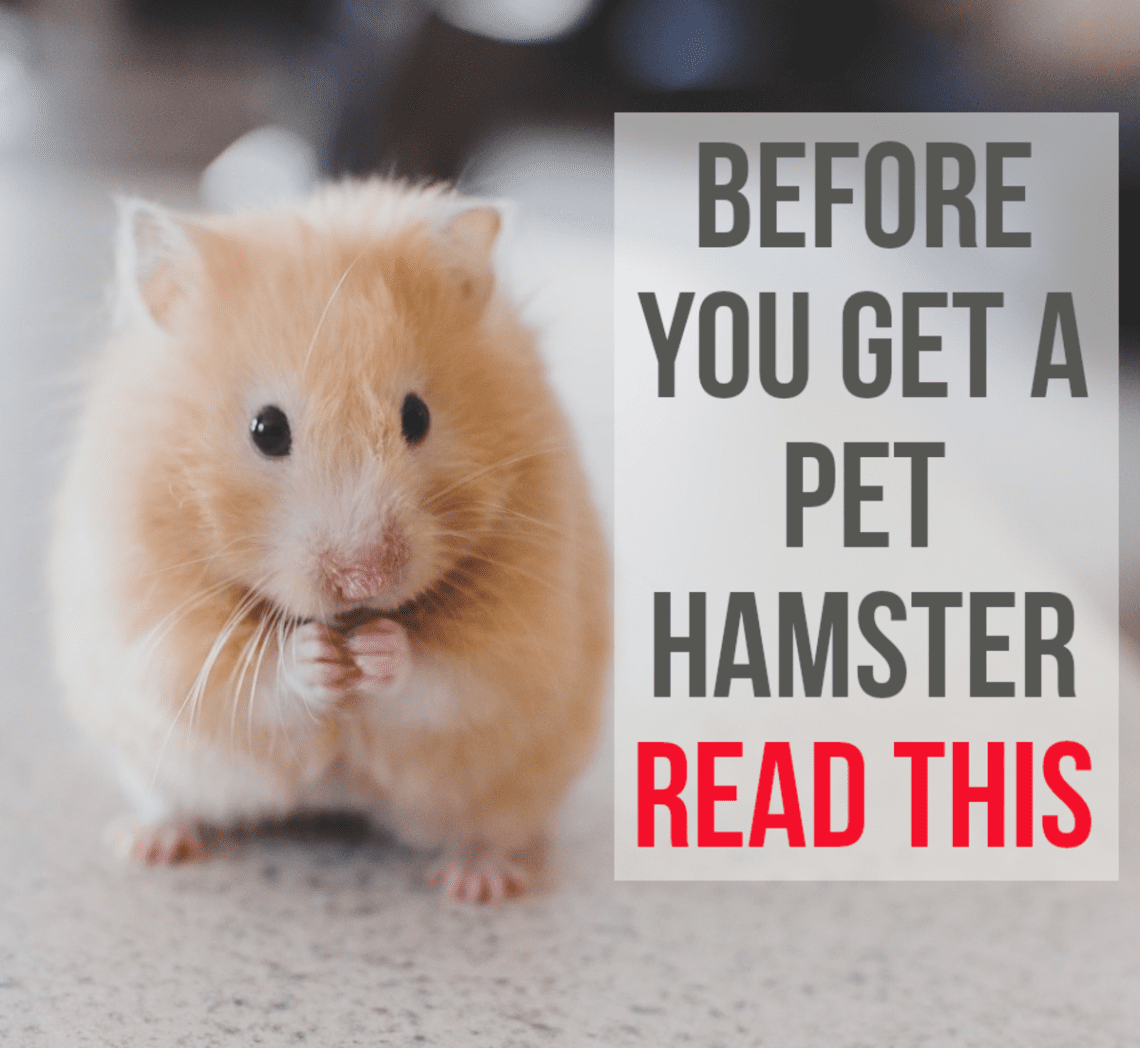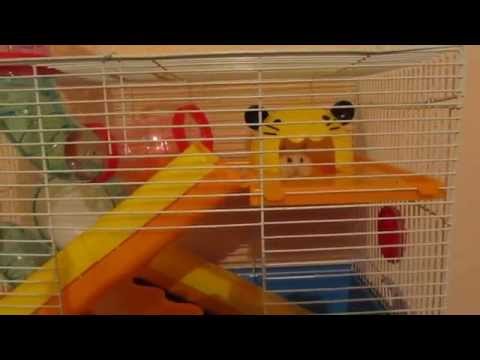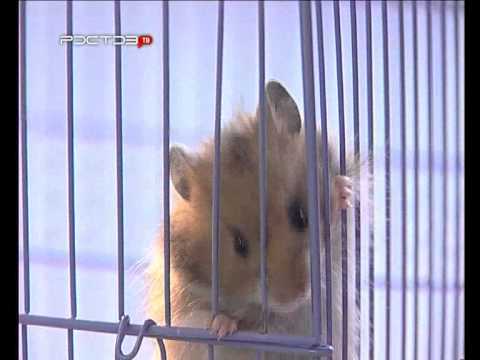
Hamsters at home: disadvantages, care, feeding and reproduction
Many people have thought about getting a fluffy hamster as a pet instead of a cat or a dog. Domestic hamsters are not only a constant reason for affection, but also the simplest care, since these funny rodents are completely unpretentious in this regard.
However, you should not think that it will be possible not to think at all about such things as feeding and caring for a hamster at home and let everything take its course. Of course, domestic hamsters require attention and a certain attitude. How to properly care for them and behave with these fluffy lumps, we will tell in the article.
Contents
Keeping hamsters at home: advantages and disadvantages
Before you get a pet hamster, familiarize yourself with the main characteristics of this animal. In nature, there are several breeds of this species, among pets you can mainly find Siberian hamsters, less often – Dzungaria and Campbell’s hamsters.
A feature of hamsters is that they can feel good without their own kind. Their can be purchased without a pairif you don’t want to breed hamsters in the future.
The advantages of keeping hamsters at home are as follows:
- unlike the same cats, they are not vindictive and do not remember the offenses caused;
- do not create noise in the apartment;
- easy to train;
- when eating juicy food for a long time may not want to drink;
- easy to breed at home;
- do not show discontent when playing with children;
- a small terrarium is enough for living;
- unpretentious in food.
However, you should be aware of such difficulties when acquiring hamsters:
- if you keep hamsters not in a terrarium, they can ruin things and gnaw on furniture, shoes and other things;
- so that there is no unpleasant smell in the cage, you need to constantly clean it;
- in winter, hamsters hibernate, sometimes wake up, then they need to be well fed;
- can sometimes be aggressive.
As a rule, hamsters have a body length of 5 to 30 cm. The color of hamsters can be different:
- ashen;
- gray-brown;
- with a dark stripe on the back and black-brown heels in front of the body;
- white and fluffy (artificial Angora breeds).
home for a hamster
Before you bring your hamster home, you need to choose a home for him. Quite a few people for this purpose uses an aquarium or a glass jar, but such living conditions are not suitable for the animal and it will experience discomfort.
Therefore, for a hamster, you should purchase a special cage measuring at least 50 by 30 cm with horizontal bars. The gaps between the bars should be small so that the hamster does not get out.
You should also choose the right accessories for the cage, here is their description:
- filler – necessary so that there is no unpleasant smell near the cage. The cage should be washed regularly and filled with compressed or granular filler, they ideally absorb unpleasant odors. In addition to the filler cage can be filled with sawdustin which hamsters love to burrow so much before going to bed;
- feeder – in total there should be two feeders in the cage: one for dry food, and the second for fresh. Separately, there should also be a drinker for liquid;
- mineral stone for sharpening hamster teeth;
- toilet – you need to constantly change the bedding, since the hamster always chooses a place for the toilet on his own;
- wheel for running – hamsters are very active animals, therefore it is highly desirable to put such a simulator in a cage. The wheel must have a solid surface so that your hamster does not damage the paw.
It is highly advisable to choose one place for a cage with a hamster and not rearrange it, since hamsters are not lovers of frequent changes. Also, do not place the cage in drafts or near cribs or play areas for children.


Watch this video on YouTube
How to feed hamsters?
Domestic hamsters should be fed several times a day. The second meal of the hamsters should be in the evening and for this meal should give him high calorie food, because for hamsters the nocturnal lifestyle is more familiar. It is highly undesirable to give hamsters vegetables and fruits with a watery base, such as cucumbers or watermelons, as the animal can be poisoned by them.
Once a day, the hamster’s diet should include special grain feed, which can be purchased at a specialized store. The hamster will determine the norm on his own, as a rule, no more than three teaspoons is enough for him. But at the same time, you need to ensure that the hamster always has at least a couple of grains in the feeder.
Provide your pet with constant access to water and so that he does not throw sawdust in a bowl of water, it is better to choose an automatic drinker. Do not forget to follow during the day for its filling. If the hamster does not drink a drop of water during the day, he may die.
Acceptable foods for hamster food are:
- pitted pears and apples;
- pumpkin and carrots in limited quantities;
- nuts and seeds in limited quantities;
- potatoes;
- corn;
- lean boiled meat;
- fish fat;
- vitamins A, E and D.
Do not give hamsters the following foods:
- garlic;
- bow;
- citrus fruit;
- Exotic fruits.


Watch this video on YouTube
Features of care for domestic hamsters
Like most other animals, pet hamsters can be stressed. As a rule, their reasons may be such circumstances:
- changes in the daily routine of the animal;
- lack of water;
- external control over his offspring;
- the presence of lighting in the cage where he sleeps;
- sharing another animal, even a hamster.
Also, in order to prevent stressful situations for your hamster, do not speak loudly and do not shout, being near his cage, do not make any sudden movements in this place so that the animal does not feel danger. If you talk to a hamster quietly and calmly, he will behave accordingly.
Also consider the following tips for caring for pet hamsters:
- the relocation of a hamster to another cage must be done using a special tube. First, he is nudged by the hand so that he can explore the new place;
- A hamster’s teeth must be cared for carefully and on an ongoing basis. If he eats not too hard food, then teeth grow very fast, and this interferes with normal food intake;
- cleaning the cage should be done several times a week. During cleaning, the hamster is pulled out of the house and transferred to another place, for example, in a prepared jar. The bedding is changed, and the cage is washed with detergent. The place of the toilet should be cleaned regularly as it gets dirty;
- Hamsters need to be walked regularly. For this, a special playing place is equipped. You can make an obstacle course, mazes and something like that. At the same time, all sharp objects must be removed from the resting place, and those nearby furniture and decor should be as durable as possible in terms of sustainability;
- you need to regularly monitor the claws of the animal, especially if it has reached a certain age. Nails are trimmed with special scissors for manicure. Do not use a nail file, the hamster may be frightened and hurt. With a weak pigmentation of the hamster’s claws, they are trimmed only in daylight or table light. When injured, during this procedure, the foot is pulled with a bandage, and the cage itself is washed so that the infection does not get into the wound;
- Hamsters are not very fond of water, so bathing is not recommended unless necessary. But if you still need to buy a hamster, be careful that water does not get into his ears, eyes or nose. Do not let the hamster out of their hands so that he does not bite you. You need to bathe the animal only with severe pollution, using rabbit shampoo for this purpose. After bathing, hold your hamster in your arms for a while to keep him warm, and then wrap him in a soft towel.
What else should be considered when keeping a hamster in the house?
To keep your hamster calm and stress-free, remember the following:
- populate it separately from other hamsters;
- provide the hamster with peace and quiet;
- do not show the hamster other pets;
- clean the hamster’s house when he does not see it;
- do not interfere with his way of life;
- never punish hamsters;
- do not take him outside and do not let him on the grass, direct sunlight is especially dangerous for him, he can die in just a few minutes.
If you plan to not only keep, but also breed hamsters at home, then it will not be too difficult. They are able to give regular offspring and independently feed up to ten broods during the year. For this mother hamster needs to create the appropriate conditions – ensure peace and do not pull out of the cage during pregnancy.
As you can see, keeping pet hamsters in an apartment is not so difficult. Subject to all the necessary conditions of maintenance and care, this animal will delight you for a long time and especially your children, who will play with hamsters with great pleasure.


Watch this video on YouTube








